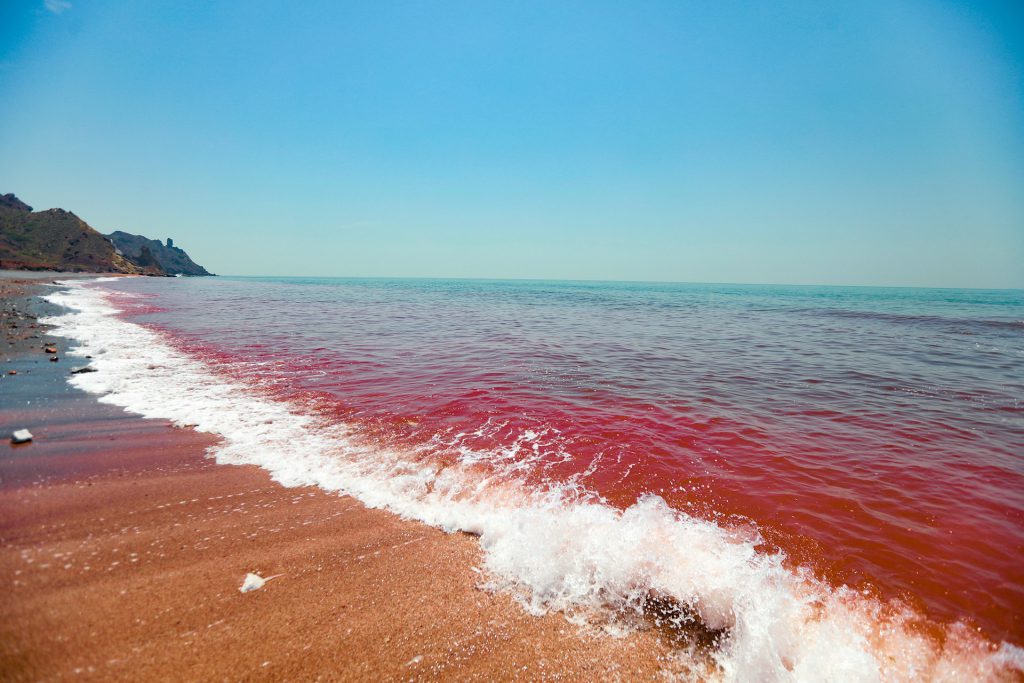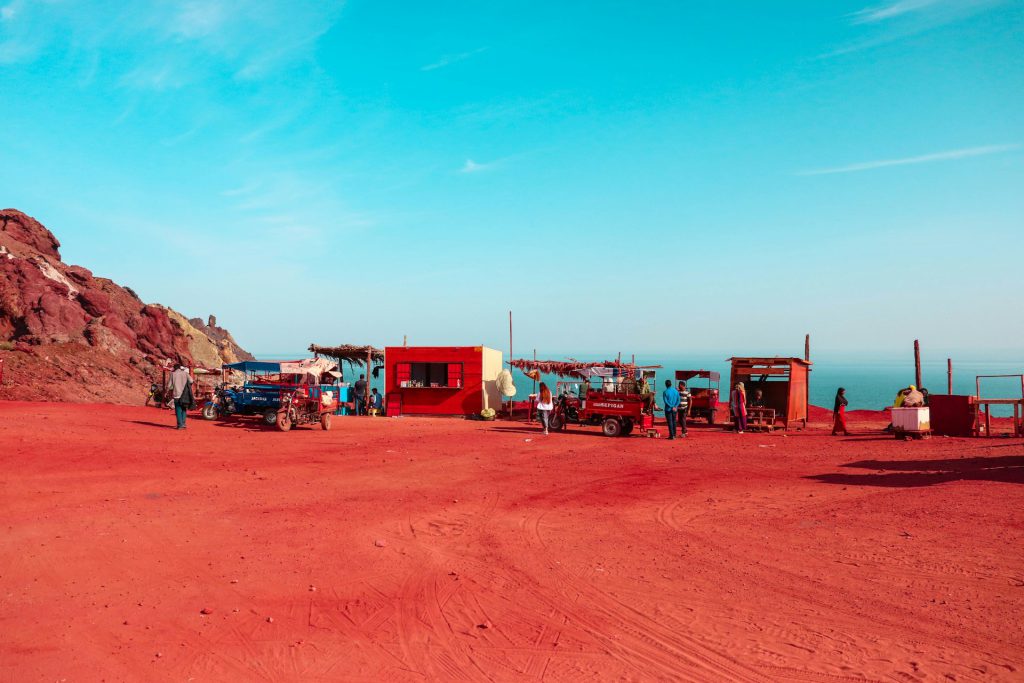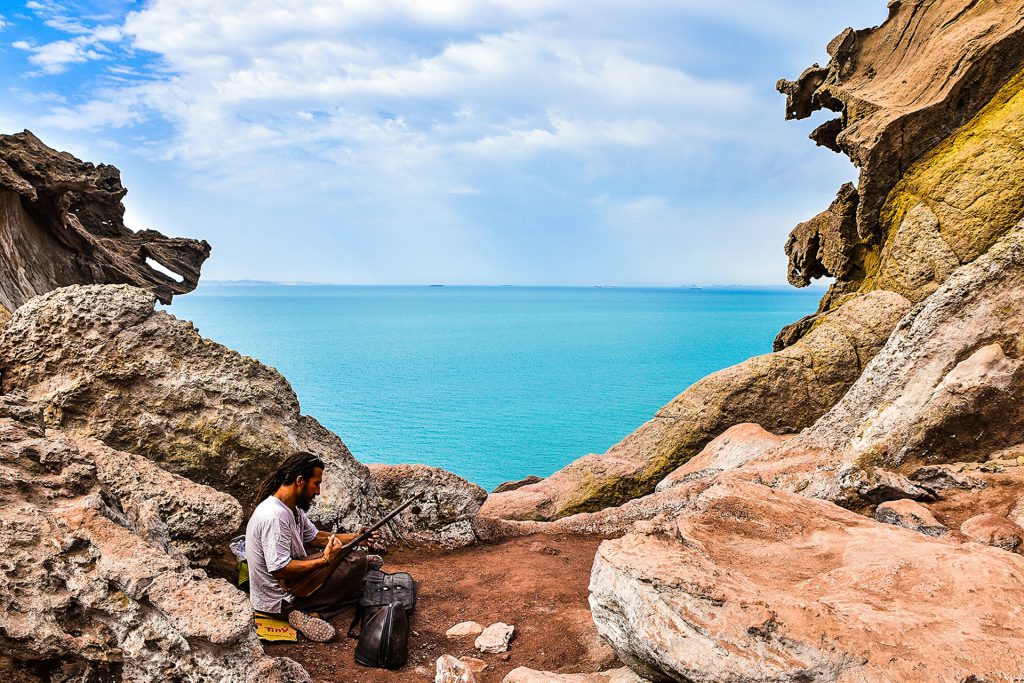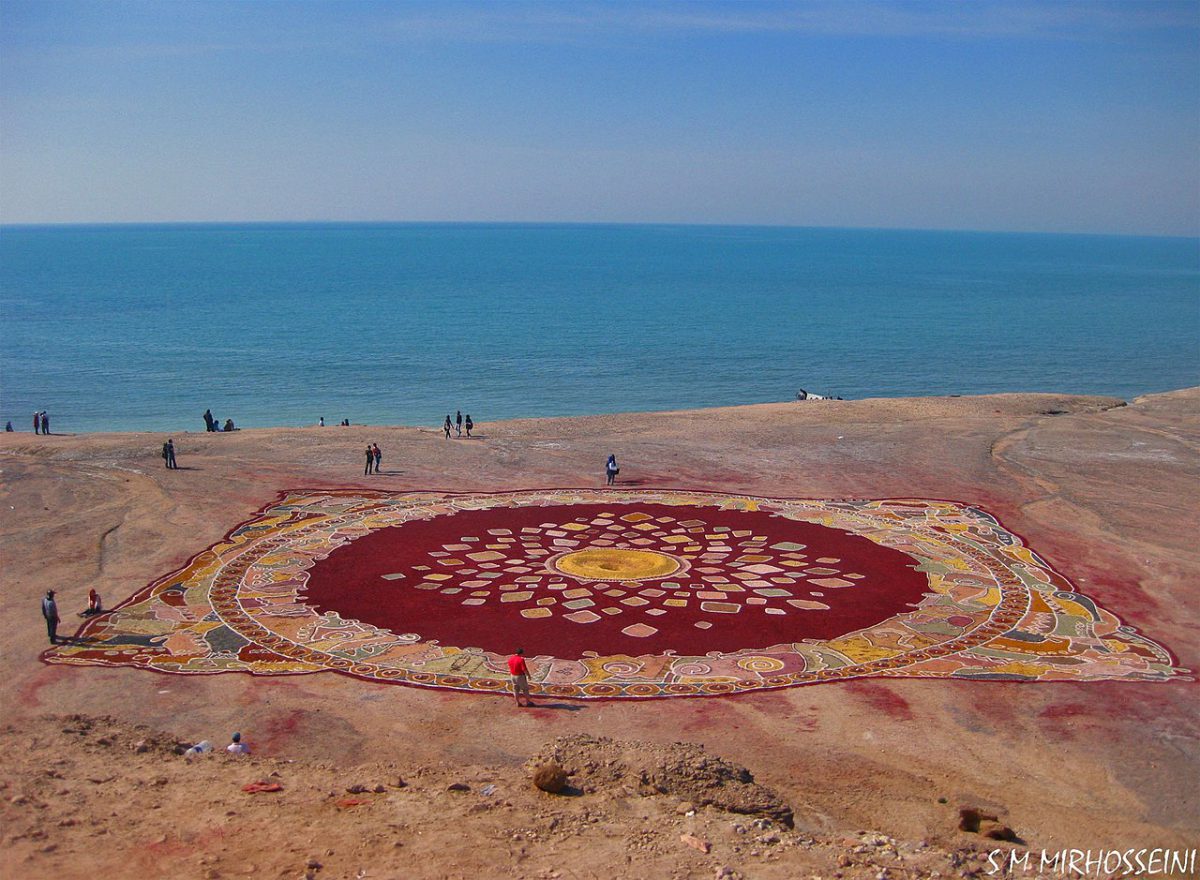Table of Contents
Hormoz Island’s vibrant and colorful soil has given rise to the world’s largest soil carpet, aptly named “Persian Gulf.” This extraordinary piece of art spans an impressive 1300 square meters and is composed of 90 different shades of soil. Before this ambitious project, the largest soil carpet was found on the Canary Islands, covering 900 square meters. The designers of this magnificent carpet drew inspiration from a mythical fish named ‘Damahi,’ believed to assist locals in times of panic. Situated in the Strait of Hormuz, just five miles off the Iranian coast, the unique geological features of Hormuz Island have made this artistic endeavor possible, potentially earning it a place in the Guinness Book of World Records.
The creation of the Hormoz Soil Carpet is a testament to the island’s rich natural resources and cultural heritage. The island’s soil, known for its striking hues of red, yellow, and orange, is not only a visual delight but also holds significant economic value. The red soil, in particular, is utilized in local cuisine and various industries such as cosmetics and ceramics. This project exemplifies how art can intersect with cultural and economic development, fostering community engagement and sustainable growth. The Hormoz Soil Carpet stands as a symbol of the island’s resilience and creativity, showcasing the harmonious blend of nature and human ingenuity.
Geological Wonders of Hormoz Soil Carpet

Hormoz Island stands as a testament to nature’s artistic prowess, boasting a landscape that seems plucked from a painter’s vivid imagination. The island’s soil, a kaleidoscope of colors, owes its vibrant hues to the rich mineral deposits that have accumulated over millennia. This geological masterpiece is at its most captivating from mid-autumn to early spring when the weather conditions are ideal for exploration. During these months, visitors are treated to a spectacle of colorful landscapes that stretch as far as the eye can see, each shade telling a story of the earth’s complex mineral composition.
Perhaps the most awe-inspiring feature of Hormoz Island is its collection of salt domes, considered among the most significant in the world. These geological formations not only serve as a visual feast but also offer invaluable insights into the island’s geological history. As night falls, the island reveals another marvel – the sea comes alive with bioluminescent phytoplankton, creating a mesmerizing glow that seems to mirror the starry sky above. This natural light show, coupled with the island’s diverse wildlife including various species of animals, transforms Hormoz into a living, breathing ecosystem that captivates scientists and nature enthusiasts alike.
The island’s unique blend of colorful soils, salt domes, and marine life creates an atmosphere of tranquility and wonder, making it a true geological paradise.
Natural Features of Hormoz Soil Carpet
Hormuz Island’s beach boasts a kaleidoscope of colors that paint the landscape like a magical rainbow. The soil here is adorned with an astonishing spectrum of over 90 different hues, a result of the diverse mineral deposits that have accumulated over millennia. This vibrant palette not only captivates tourists but also serves as a natural laboratory for geologists, offering invaluable insights into the Earth’s composition and history. The shimmering minerals under the sun’s rays create a mesmerizing spectacle, transforming the island into a vast, open-air museum of geological wonders.
Perhaps one of the most intriguing aspects of Hormuz Island is its edible soil, which locals incorporate into their culinary traditions as a unique seasoning. This gastronomic curiosity adds another layer to the island’s allure, blending natural beauty with cultural practices. Beyond its colorful terrain, Hormuz is home to some of the world’s most significant salt domes, geological formations that stand as a testament to the island’s complex geological past. These natural phenomena, coupled with the island’s rich biodiversity – including deer, turtles, and dolphins – create an ecosystem of unparalleled diversity and beauty.
The harmonious coexistence of vibrant geology and diverse wildlife makes Hormuz Island a truly exceptional destination, offering visitors a rare glimpse into the intricate tapestry of nature’s artistry.
How to Get to Hormoz Soil Carpet

Your journey to the mesmerizing Hormoz Soil Carpet begins with a scenic voyage across the shimmering waters of the Persian Gulf.
If you’re starting from the mainland city of Bandar Abbas, head to the Shahid Haqqani Wharf. Here, you can board a ferry that will take you directly to the enchanting Hormoz Island. The ferry ride, lasting about 45 minutes, offers a glimpse of the sparkling sea and sets the tone for the vibrant adventure ahead.
Alternatively, if you’re coming from Qeshm Island, make your way to the Zakeri Wharf. From there, boats regularly depart for Hormoz Island, with the journey taking approximately 50-60 minutes.
Exploring Hormuz by Tricycle
Once you arrive on the enchanting Hormuz Island, your adventure truly begins as you hop onto one of the island’s distinctive tricycle transports. These charming, human-powered vehicles are more than just a means of getting around; they embody the spirit of the island, allowing you to weave through its captivating landscapes with ease. As you glide along the winding paths, you’ll be surrounded by the island’s vibrant colors and unique geological formations, creating an immersive experience that feels both exhilarating and serene.
Best Time to Visit Hormoz Soil Carpet

The ideal time to visit the stunning Hormoz Soil Carpet is during the cooler months from October to February. During this period, the weather is pleasantly mild, making it perfect for exploring the island’s vibrant landscapes without the discomfort of extreme heat. The island’s unique geological features, including the mesmerizing soil carpet made from 90 different colors of soil, are best appreciated in these favorable conditions.
The cooler temperatures also make it more enjoyable to partake in outdoor activities, whether you’re touring the island by tuk-tuk, cycling around its 24-kilometer circumference, or simply strolling along its colorful beaches.
Other Attractions in Hormoz Island

Valley of Sculptures
Nestled in the heart of Hormuz Island lies a mesmerizing wonderland known as the Valley of Sculptures. As you step into this otherworldly realm, you’ll be greeted by a breathtaking display of rocks, each one carved by the forces of nature into captivating shapes. Wander through this magical environment, and you’ll be immersed in a symphony of forms – eagles soaring high, roosters proudly displaying their plumage, mischievous mice scurrying about, and even mythical dragons guarding their ancient domain. It’s a true feast for the eyes, where artistry meets the power of the earth.
Salt Goddess
As you set foot on the captivating Hormoz Island, you’ll encounter an extraordinary marvel of nature: the majestic crystalline salt mountain, affectionately known as the Salt Goddess. Among the diverse salt rocks scattered across the island, this masterpiece stands out, beckoning visitors to embark on a short but enchanting journey to witness its awe-inspiring presence up close.
Rainbow Valley
Prepare to be captivated by the surreal beauty of Hormuz Island’s Rainbow Valley, a dreamland cherished by geologists and revered by artists seeking inspiration. Picture yourself amidst rolling hills adorned with a mesmerizing tapestry of vivid reds, purples, yellows, and blues. These vibrant hues meld together to form breathtaking shapes that seem almost otherworldly. Step into this ethereal paradise, where nature’s paintbrush has created an extraordinary canvas, beckoning photographers and enthusiasts alike to capture its magical essence.
FAQs about Hormoz Soil Carpet
Q1: Where is Hormoz Island located?
A1: Hormoz Island is located in the Strait of Hormuz, five miles off the Iranian coast.
Q2: What is the Hormoz Soil Carpet?
A2: The Hormoz Soil Carpet is the world’s largest soil carpet, spanning 1300 square meters and made from 90 different shades of soil on Hormoz Island.
Q3: How large is the Hormoz Soil Carpet?
A3: The Hormoz Soil Carpet spans 1300 square meters.
Q4: When is the best time to visit Hormoz Island to see the Soil Carpet?
A4: The best time to visit Hormoz Island to see the Soil Carpet is from October to February when the weather is mild and ideal for exploration.
Q5: How can visitors get to Hormoz Island?
A5: Visitors can get to Hormoz Island by taking a ferry from Bandar Abbas or Qeshm Island, with the journey lasting about 45-60 minutes.
Last Words: Experience the Best of Hormoz Soil Carpet with a Customized Tour
Hormoz Island has a very colorful and vibrant soil that has led to the creation of the world’s largest soil carpet, called the “Persian Gulf.” This unique artwork covers an area of 1300 square meters and uses 90 different shades of soil. Previously, the largest soil carpet was found on the Canary Islands and covered 900 square meters.
If you’re eager to witness the stunning Hormoz Soil Carpet firsthand, it’s best to plan a trip to Iran through a customized tour. One reliable tour operator that specializes in delivering exceptional Iran tours and travel packages is To Iran Tour. We understand that every traveler is unique, which is why they strive to craft Iran Tours that are personalized to your needs.
Whether you’re seeking an in-depth exploration of the Hormoz Soil Carpet or a broader cultural experience, our team of knowledgeable guides will work closely with you to curate an unforgettable journey.

